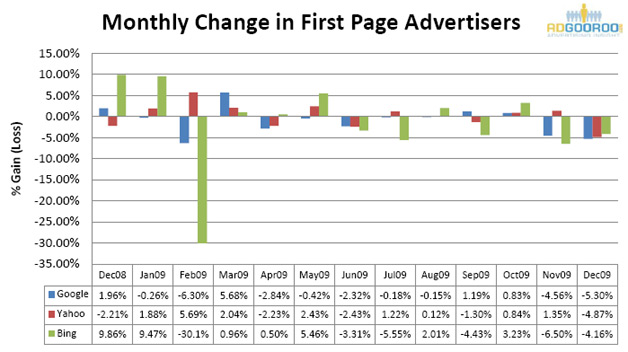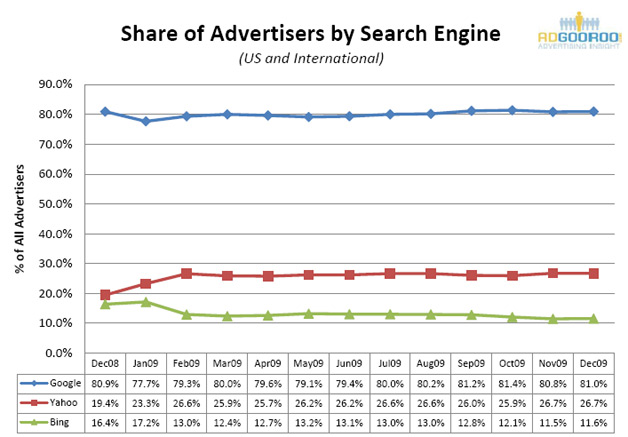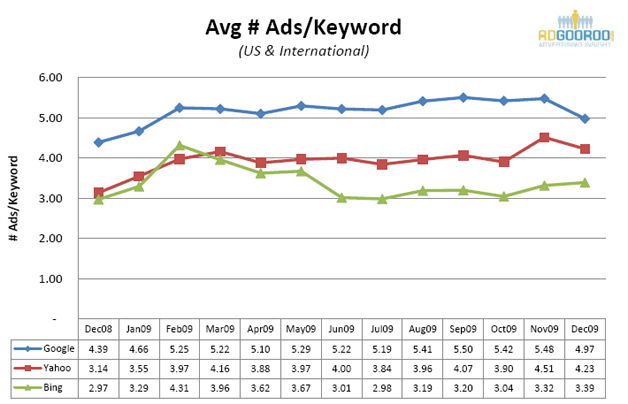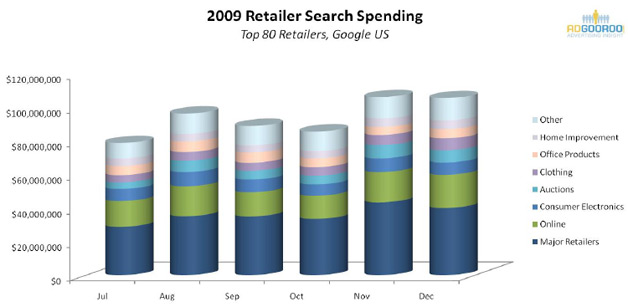A couple months ago, Google introduced the "Analyze Competition" feature for AdWords advertisers. This can be found in the "opportunities" tab.
The feature was initially only available to a small number of advertisers using the English language AdWords interface. Today, Google announced that it is expanding. Now the feature is available for all English language accounts.
The feature examines the account’s activity over two weeks, and lists categories that represent the products/services you’re advertising. These are based on search terms and are matched up against your keywords, ad text, and landing page text. For each category associated with the account, users will see a bar graph highlighting individual performance compared to the performance of other advertisers in the category.
Google’s Jason Shafton explains, "In addition to the feature’s core functionality, you can now also see the Google search terms that triggered your ad for each of the most specific sub-categories in your account. Click a category name to see more specific sub-categories. When the category name is no longer a link, you’ll know you’re at the most specific sub-category — this is where you’ll see a "See search terms" link. Seeing the search terms that triggered your ad can serve as inspiration for new keyword ideas or help you understand if your keywords have been miscategorized by our system. If you see that the search terms listed for a given category are not related to the keywords in your ad groups, you may consider making keywords more specific or adding new negative keywords."
Google says it intends to bring more features to Analyze Competition in the future.
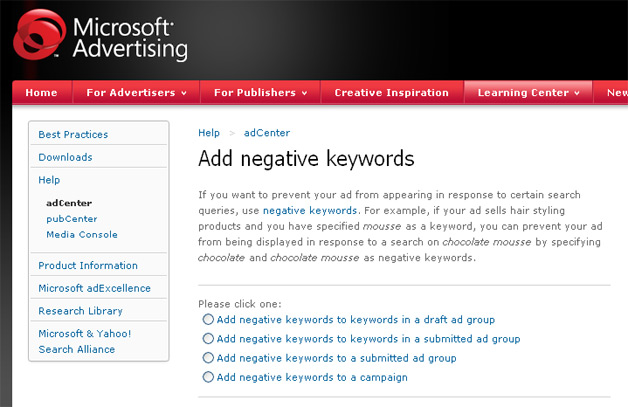

 So too many choices in how to reach consumers is a problem? Is Google going to reduce the number of options available? Well, I guess we’ll see, but at the same time, Schmidt is also quoted about some new interactive video ads Google has in store. Vascellaro reports, "Such ads, which could appear anywhere on a Web page, not just inside a video, would be like mini-Web pages. That means they could allow Web users to watch a video, leave a comment and see real-time updates within the ads that are more customized to their interests." She adds that Schmidt suggested such ads will become "prevalent", but didn’t comment on specific plans.
So too many choices in how to reach consumers is a problem? Is Google going to reduce the number of options available? Well, I guess we’ll see, but at the same time, Schmidt is also quoted about some new interactive video ads Google has in store. Vascellaro reports, "Such ads, which could appear anywhere on a Web page, not just inside a video, would be like mini-Web pages. That means they could allow Web users to watch a video, leave a comment and see real-time updates within the ads that are more customized to their interests." She adds that Schmidt suggested such ads will become "prevalent", but didn’t comment on specific plans. 
